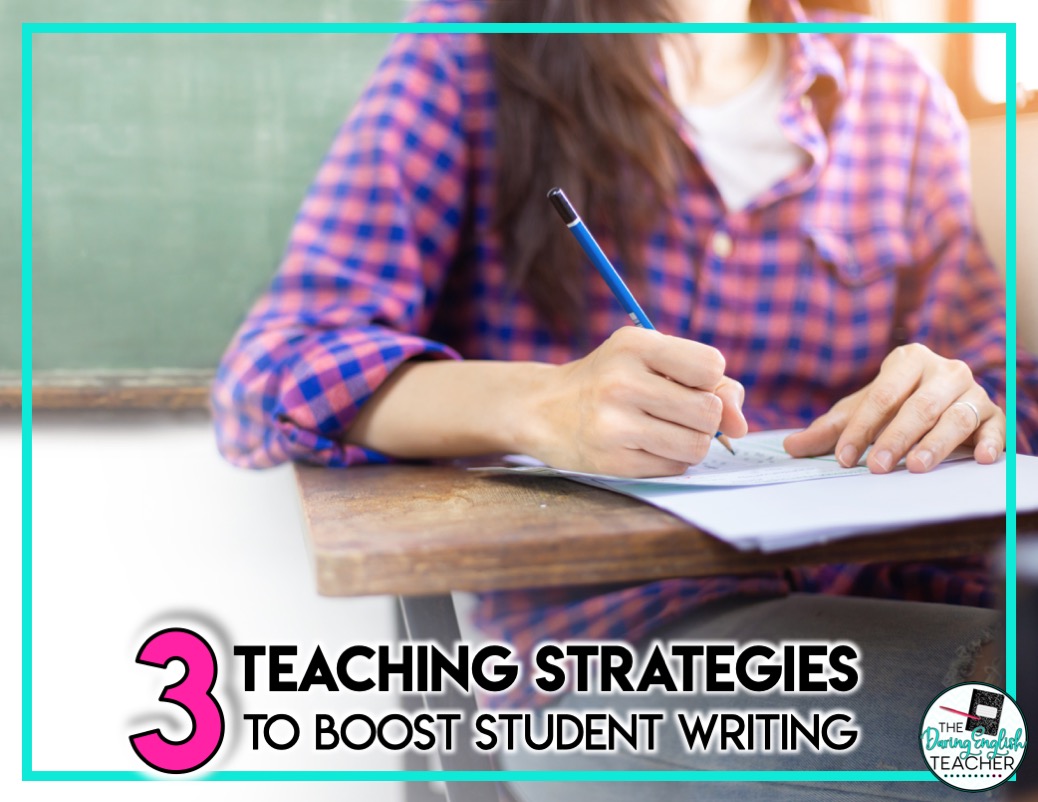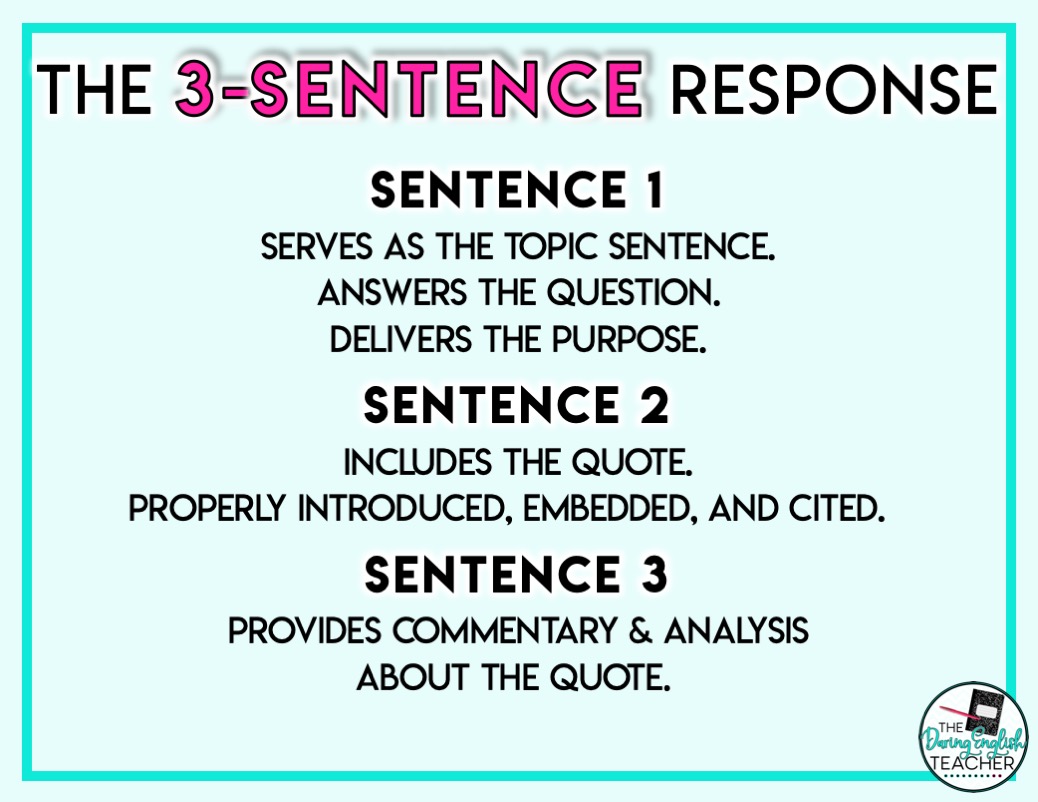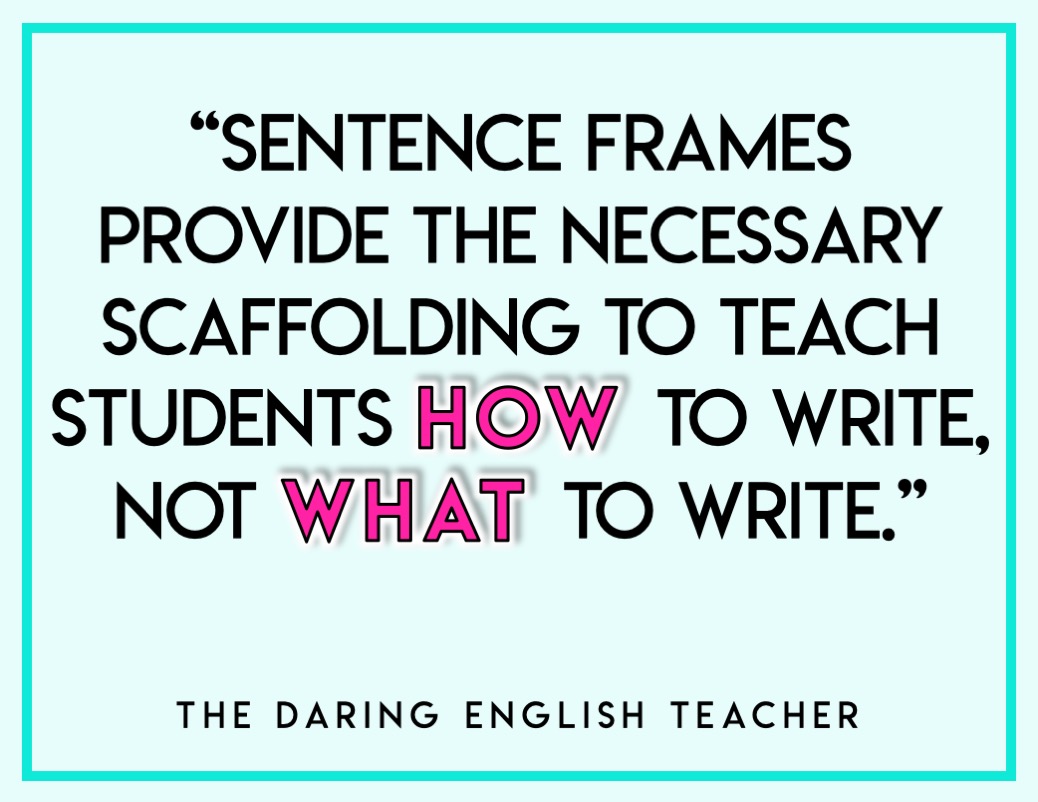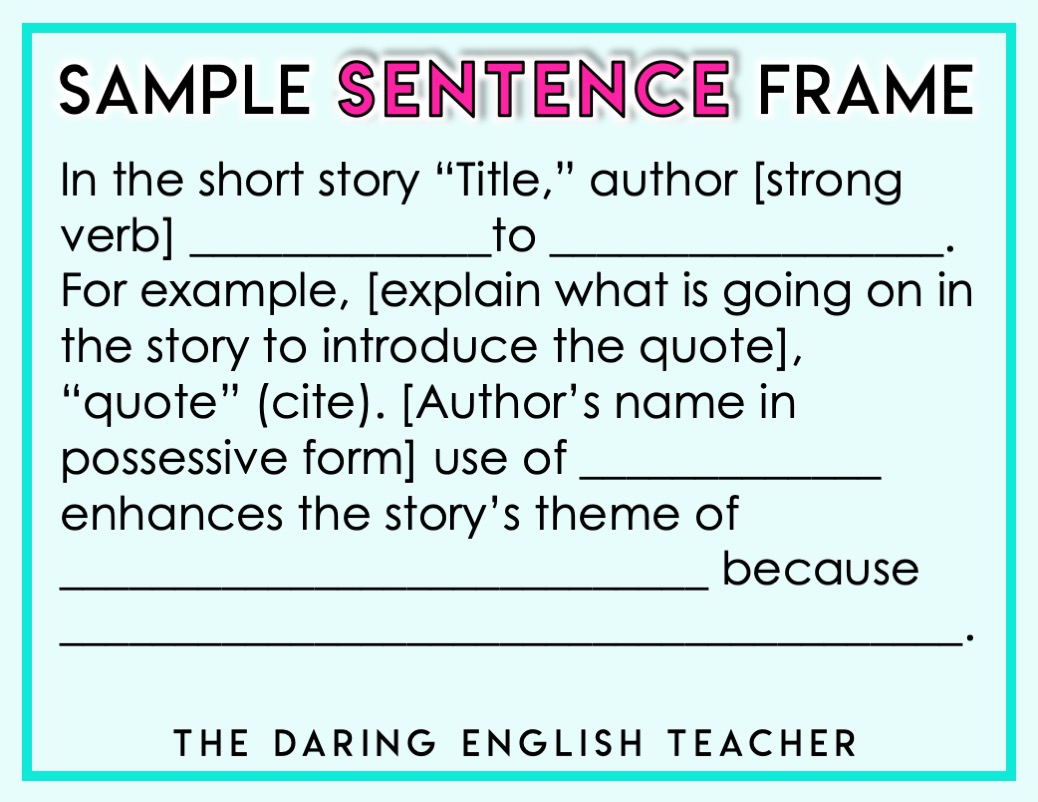Helping students become stronger writers is one of my passions. As a high school English teacher, there aren’t many things that are as rewarding as seeing a student grow in their writing abilities. Several years ago, I switched up the way I taught my short story unit at the beginning of the school year, and I saw so much growth in my students. Not only were they understanding the literary devices and connecting with the stories more, but they also became stronger, more confident writers.
The secret to this success is a combination of three teaching strategies: short writing assignments, sentence frames, and immediate feedback. When combined, these three teaching strategies provide students with the skills, practice, and reassurance that help them increase their writing efficacy.
Short Writing Assignments
As we work our way through our short story unit, I assign my students a quick and straightforward three-sentence writing prompt to accompany each story. In their responses, I require that students answer the prompt in a topic sentence, provide textual evidence to support their answer, and then explain how their evidence connects to and proves the answer from their topic sentence.
There are two benefits for the short, three-sentence writing prompts. First, three sentences are much more manageable for students. It is less intimidating, and it allows students to focus on writing without being overwhelmed with a multi-paragraph assignment. Secondly, shorter writing responses provide teachers with the ability to provide students with timely feedback and individualized instruction.
Here is a sample break-down of the sentences in the three-sentence response.
Another benefit of the three-sentence response model is that the possibilities are endless. As a teacher, you can change or modify the response to fit a variety of writing purposes and assignments.
CCSS.ELA-Literacy.W.6-12.1
- Do you agree with the author’s assertion that XYZ? Provide textual evidence to support your answer.
- What is the author’s strongest argument in the article? Provide textual evidence to support your answer.
CCSS.ELA-Literacy.W.6-12.2
- In three sentences, identify the author’s main argument of the article and explain how the author develops the argument.
- In three sentences, explain how the author uses foreshadowing to enhance the mood of the story.
For the sake of this blog post, I’ll use the writing prompt below. You can use this writing prompt with any short story or other work of fiction.
Explain how the author uses symbolism to enhance the theme of the story.
Use Sentence Scaffolds
Now that you have a good start for planning the prompt that you want your students to write, it is now time to provide your students with the necessary sentence scaffolds to help them write academically.
A common misconception about sentence frames, sentence starters, and sentence scaffolds is that they dumb down the curriculum, assignment, or rigor within a classroom. That is not true. Sentence frames provide the necessary scaffolding to teach students HOW to write, not WHAT to write.
Using a sentence scaffold in the classroom, even at the high school level, helps students in many ways. Sentence scaffolds boost student confidence and efficacy, minimize writer’s block, and provide students with the necessary academic framework to organize their ideas. Plus, you can check out this post about how to teach students how to write about quotes.
Sample Sentence Frame
This scaffolded writing prompt packet includes multiple writing assignments with varying levels of scaffolds to help all learners.
Timely Feedback
The final teaching strategy that completes this method is providing students with timely feedback. So often, our students won’t ever read the feedback that we’ve written for them. It’s frustrating, to say the least, especially when you’ve spent the time to write out how students can grow as writers.
Since this three-sentence writing response is so short, students have time to complete their entire response within a class period and also provide students with feedback. When I assign these writing prompts in my classroom, we’ve already, as a class, read the story, analyzed the story, and completed a group brainstorming activity so that students are ready to write.
One of my favorite ways to complete group brainstorming is by using sticky note graphic organizers. Typically, I assign one of these organizers after we read a story. Then my students go back and closely reread the story to find quotes demonstrating various literary devices.
As my students work on their writing responses, I walk around the room and help out my students. When my students finish, they raise their hands, and I come over and read and score the response immediately. If the response meets my standards, they receive a 10. If it doesn’t, I provide my students with quick one-on-one individualized instruction on how they can improve their response. Since there are only three sentences to write, the students have time to digest the feedback and work on revising their work immediately.
These writing days are pretty hectic. Once the students start completing their assignments, I am ping-ponging back and forth my room rather urgently trying to get to every single student. I have rather large class sizes (35 high school students), and I am typically able to get to about half of my students in the allotted time frame. For all of my students that I don’t get to, I reassure them that it is okay. I make sure that I use the time before or after school to grade all of the responses. Since they are only three sentences long, it does not take a long time at all.
No matter what, it is always important to provide students with encouraging feedback to accompany the constructive feedback. Find something the student did well to help boost their writing confidence.
To help ensure equitable access to additional help and feedback, when I pass the papers back to my students the next class period, I provide my students with about 10-15 minutes of class time to revise their work. From a classroom management standpoint, I also make sure that I have something for the students to complete once they complete the assignment. Further reading: Scaffolding the Literary Analysis Prompt.








